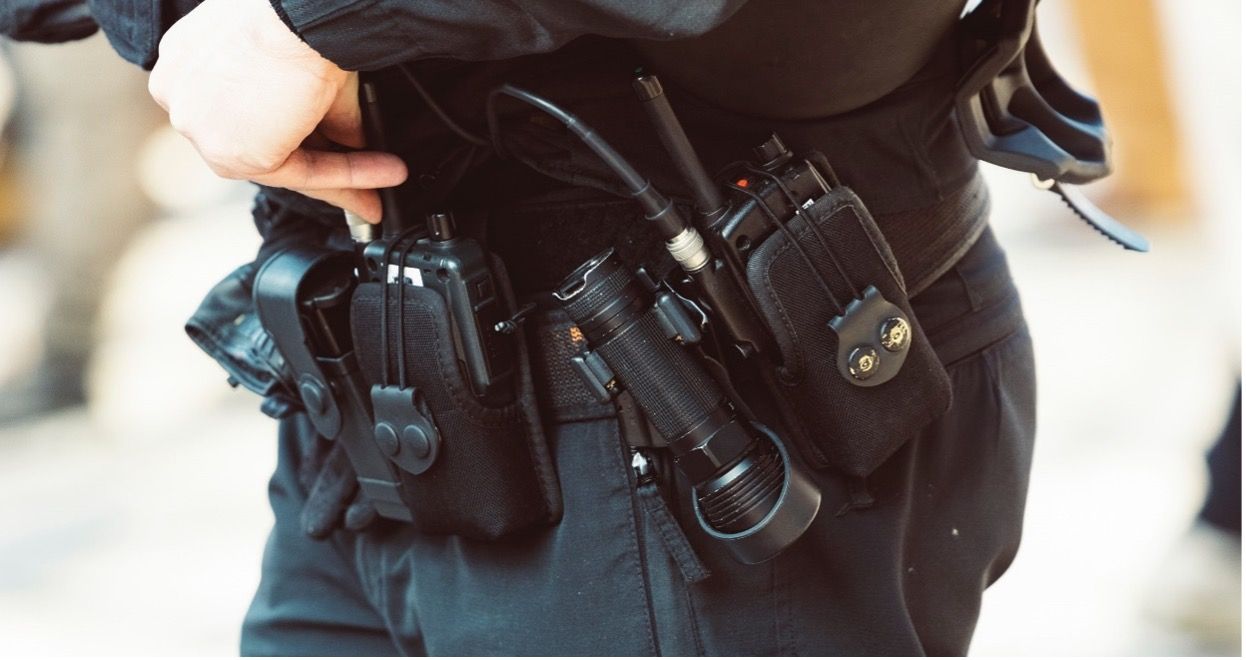By: Craig Cable
Director of Agency Growth
Lightwell Insurance Advisors of Colorado
The question about less lethal tools is one of the most frequent inquiries I receive. The decision to carry or deploy any of these options must be made with a full understanding of their benefits, limitations, and legal ramifications. Below, I have provided my perspective on the use of less lethal options such as pepper spray.
Understanding the Tool and Its Limitations
Pepper spray has its place among the various self-defense tools available to law enforcement, security personnel, and private citizens. When deadly force isn’t warranted—or when it isn’t an option due to the proximity of the subject or surrounding people—pepper spray can potentially discourage behaviors that place you or others at risk.
Pepper spray’s active ingredient is oleoresin capsicum (OC), an oily resin extracted from the fruit of pepper plants. When it comes into contact with the eyes, skin, or lungs, it can cause intense burning, swelling, coughing, and gagging. While rarely fatal, when used properly, it can be effective at temporarily incapacitating someone.
The two most common forms of pepper spray I see security teams carrying are the aerosol-based canister and the pepper ball–launching Byrna® pistol.
Aerosol pepper spray is concealable, relatively affordable, and effective when an intermediate-range (10–15 feet) self-defense tool is needed. The goal is to spray the liquid or gel into the attacker’s face and eyes to temporarily blind and incapacitate them. The challenge with aerosol pepper spray is that it can be difficult to aim and deploy into the small target area of the face—especially if the subject is moving. Another challenge is that its effects may not be immediate and can vary between individuals. It is also difficult to deploy once a situation becomes a physical altercation. Additionally, pepper spray is non-discriminatory, meaning everyone nearby—including the user—may be affected.
The Byrna® Launcher is a small, pistol-shaped device that uses CO₂ gas to launch a .68-caliber projectile (similar to a paintball) containing the OC chemical agent. Byrna® launchers start at $379 and increase in price from there. The launcher utilizes a five-round magazine that allows the user to fire up to five pepper balls at a range of up to 60 feet. This offers a significant advantage over the close-to-intermediate range of aerosol spray. However, the same challenges apply regarding aiming and effectiveness. Before making a purchase, I encourage you to watch several of the video reviews on YouTube® that demonstrate the Byrna® launcher in action.
Understanding When the Tool Is Warranted
Whenever I am asked about the use of pepper spray, I always ask the person to describe a specific situation where its use would apply. More often than not, they haven’t actually thought that through. Typically, they imagine needing to intervene and stop someone from acting out or disrupting services. The intent is to use pepper spray to take control of the situation and gain compliance. In my experience, pepper spray often produces the opposite effect. The subject may become more combative because the spray causes pain and respiratory distress. This can escalate into a physical fight with both parties now affected by OC. In such situations, I would prefer to have both hands free to defend myself or restrain the individual, rather than having my abilities compromised by the effects of pepper spray.
Legal Considerations
Anyone—individuals or organizations—considering carrying less lethal options such as chemical agents should be very clear on the legal statutes that define the use of force, as well as the local laws that regulate carrying such tools. While all 50 states and the District of Columbia permit the use of pepper spray for self-defense, about half of those states impose restrictions.
Regardless of the tool, anyone carrying these options must receive training on their use and limitations, and that training should be documented within the organization’s policies.
It is important to remember that anyone serving in a security role will rely far more on their judgment and communication skills than on any tool. If your ministry is considering less lethal options, please ensure your security team understands their role in protecting people and what level of force is appropriate in different situations. They should also receive training in other force options, including verbal de-escalation and self-defense techniques, as well as guidance on when to call the authorities—long before a situation escalates to the point of needing force.
About the Author
In addition to his role with Lightwell, Craig Cable is a sworn peace officer and serves as a Reserve Deputy Sheriff in the patrol division of the Larimer County Sheriff’s Office. He has trained hundreds of security team leaders and volunteers and was the lead developer of the Safe and Secure Church: The Ministry Approach training kit, produced in partnership with Group Publishing and Brotherhood Mutual Insurance Company. If you have further questions about protecting your ministry, please feel free to reach out to Craig at ccable@Lightwell.com.
© 2025 Lightwell Colorado, LLC. All rights reserved.
The information in this article is intended to help your ministry better understand issues of vulnerability and mitigate risks. It does not constitute legal advice. If specific legal advice is required, your ministry is encouraged to consult with a local attorney. Neither Brotherhood Mutual Insurance Company, Lightwell Colorado, nor the author assumes liability for reliance upon the information provided in this article.
Photo by Markus Spiske on Unsplash
More Blog & News From Lightwell
See MoreGet A Custom Insurance Quote Today.
Let’s illuminate the right insurance protection for your organization.
Find an Agent Request Quote
